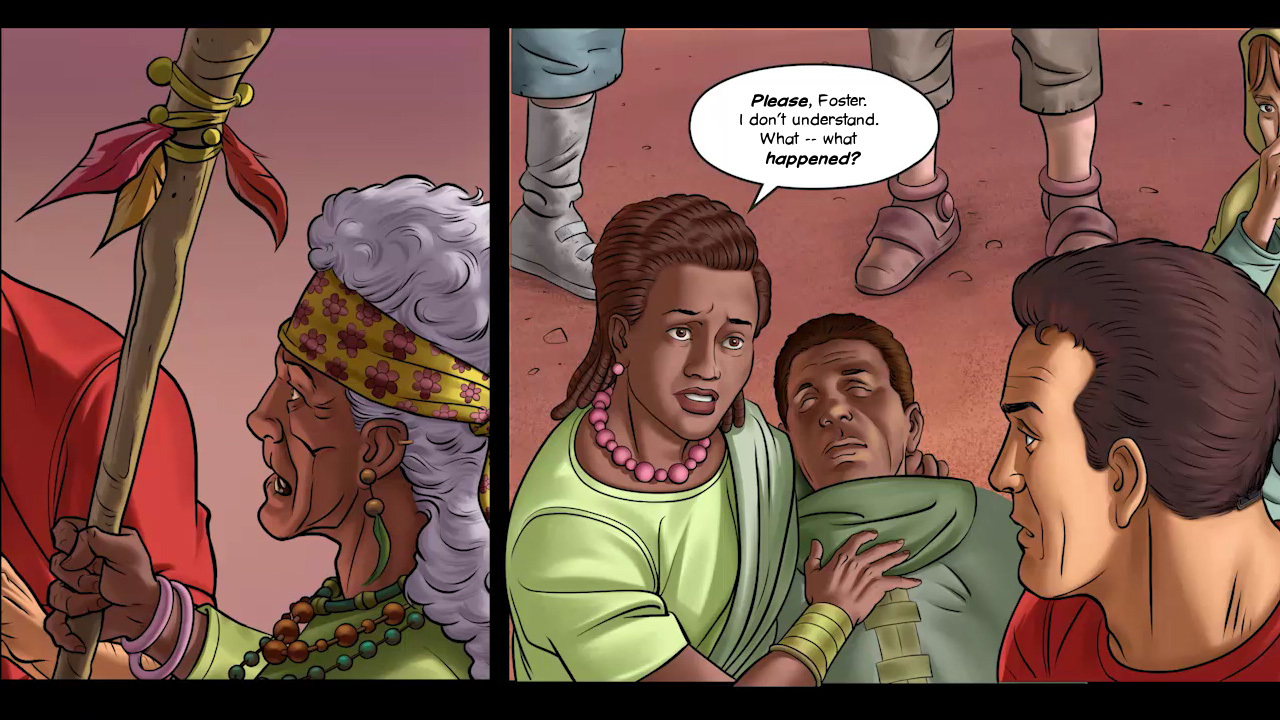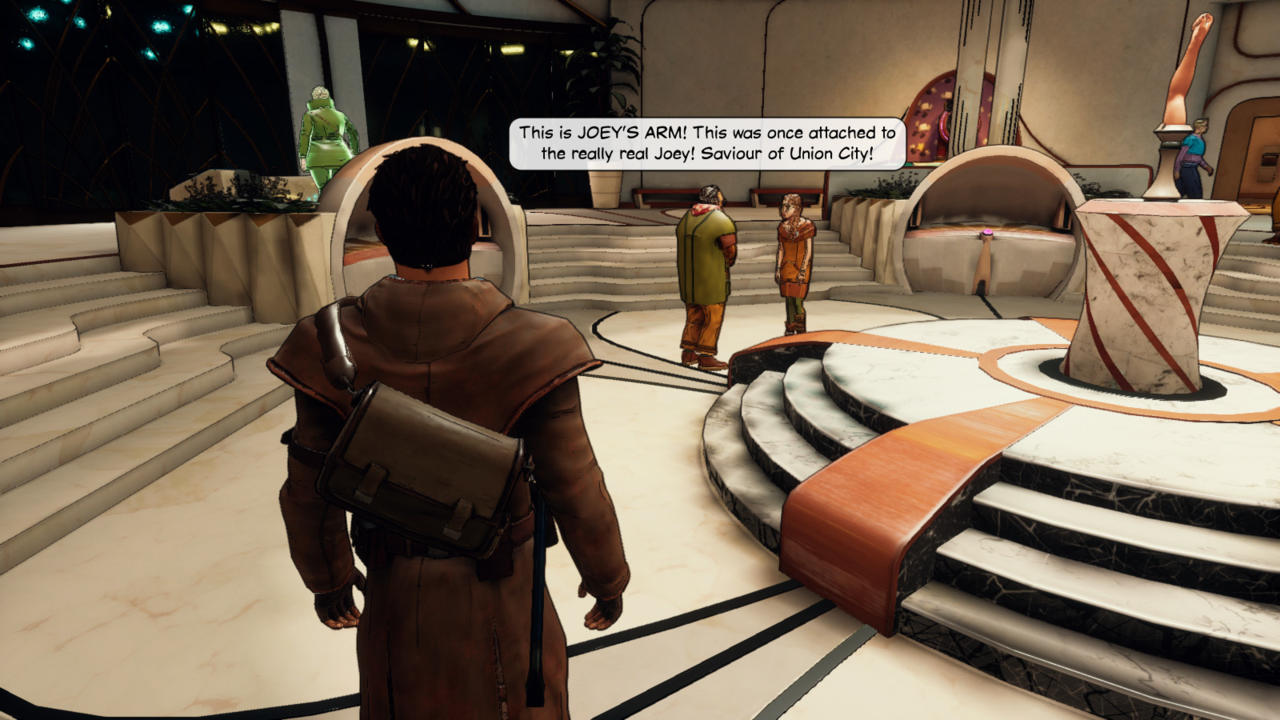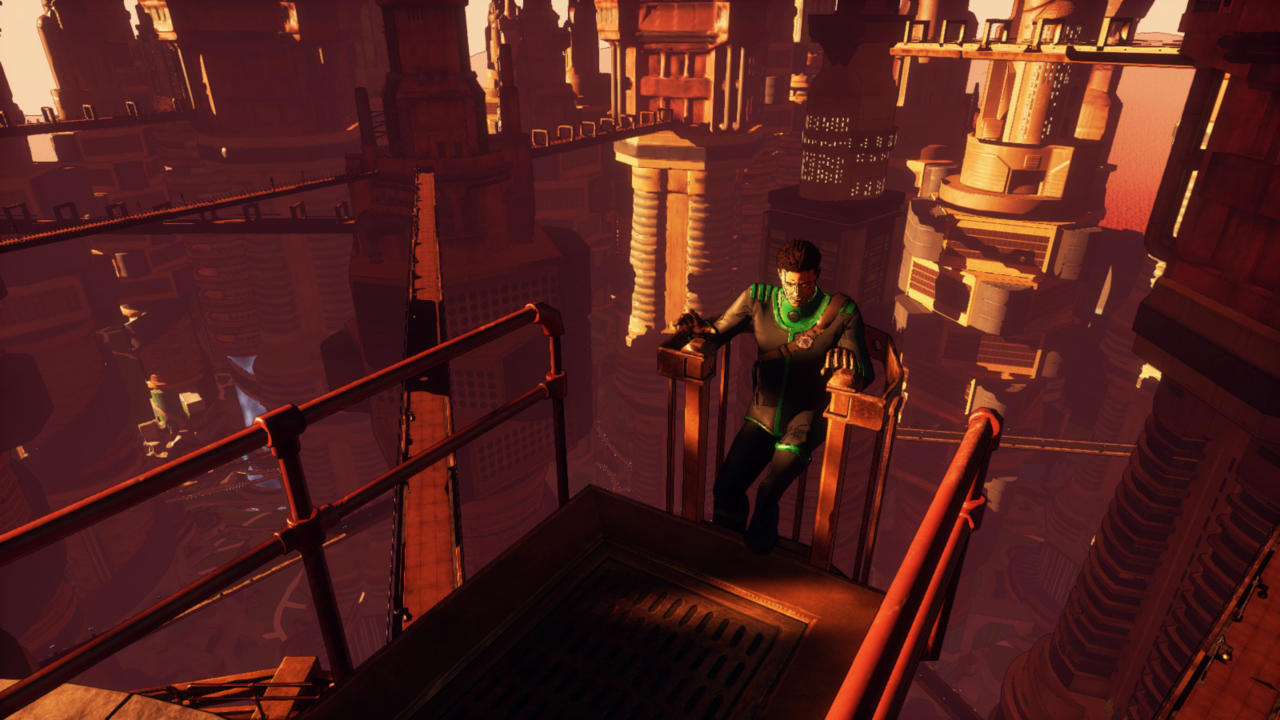In the 26 years since Revolution Software released Beneath A Steel Sky, the adventure game has come full circle. After the genre struggled to adapt into 3D and was briefly declared dead by pundits, the genre's resurgence occurred on two main fronts--the simplified, story-driven 3D games of Telltale, which focused on choice and consequence over puzzles, and retro-styled 2D games released like Unavowed, Kathy Rain, and Broken Age, which included a lot of the esoteric puzzle-solving the genre used to be known for. Beyond A Steel Sky, the long-awaited sequel to the 1994 original, is an attempt to bridge the gap between those two styles--but unfortunately, it ends up feeling like some of the messier 3D adventure games from 20 years ago rather than another classic like its predecessor.
Beyond A Steel Sky brings back Robert Foster, the protagonist of the first game, and picks up 10 years after his escape from Union City and LINC, the half-mechanical, half-organic being that runs it. Robert has returned to the "gaplands" surrounding the city, where he lives a happy, earnest life within a small society. However, he's soon forced to return to Union City after a young friend, Milo, is kidnapped by a huge robot and taken somewhere in the sprawling metropolis. The game is set in a post-apocalyptic Australia, but references to the country are unfortunately fleeting, despite the game's aesthetic invocation of the British colonization of the country--the gaplanders are largely people of colour, and Union City is predominantly white.

At first, it's great to be back in the world of Steel Sky. The nods to the first game start flowing in from the first moments--like the original game, the opening is made up of comic panels drawn by Watchmen artist Dave Gibbons, whose most famous work receives a few fun nods and Easter eggs throughout the game. Joey, Robert's robotic sidekick, also returns, and seeing these two characters reunited is one of the game's highlights. The city, which is rendered in glorious 3D is lovely, too--the skyline stretches far into the background, and the cel-shaded aesthetic suits it.
You get a good visual sense of the sort of place Union City is--one with the outward veneer of a glowing metropolis, but with a dark side of corporate maleficence beneath it. The city is run by the Council, a mysterious body that dictates what people drink, how they act, and which areas they're allowed to travel between, and it becomes clear as you play how much control they're exerting over the population.
Unfortunately, many of the game's ideas and themes aren't examined in much depth. The QDOS system (pronounced like kudos with a Q), which dictates a citizen's worth, seems like the basis for a clever mechanic of social climbing when it's first introduced. But rather than requiring you to integrate yourself within the rules of society, you can overcome any obstacle by solving traditional "use X on Y" adventure game puzzles. There's a disconnect between the ambitions of the game's world-building and its actual plot, which lacks urgency, and Union City ultimately feels like less of a cohesive location than it did in the first game. While the city is presented as huge, you're only given a handful of small environments to explore, and you're left to infer the city's size from the skyboxes. It's frustrating to be promised such a wide-open world and then be offered so little of it.
A working prior knowledge of Beneath A Steel Sky isn't required to enjoy the sequel for most of its run-time, but the final hour or so makes it very clear that Revolution is aiming to tell a single story, and the game's ending is very much a conclusion to the first game's narrative. While it's good to see some loose ends tied up, it means that the story started by the sequel ultimately fizzles a bit, despite some fun dialogue between the interesting cast of characters you encounter.
The puzzles, at least, offer some inventiveness. Early on, Robert gets his hands on a hacking tool, which leads to some fun situations where you can change the operating procedures of machines. You might, for instance, hack a door by going into a menu and switching whether it opens or stays closed when an unauthorized person uses its hand scanner. It gets more complicated, and enjoyable, when you're hacking multiple items at once--you can switch programming notes between different robots to make them act differently, or access a schematic by moving it from a file server on a computer to a hologram display.
Some of the more traditional puzzles are clever, too. One highlight was a section where you have to explore a stranger's house and learn enough about them to successfully pass off as them when interviewed. Another is the opening hour of the game, which feels like an adventure game mixed with an escape room as you move through a single, closed environment, trying to figure out how everything interacts. Other areas offer less interesting solutions, though, and there is a bit of an overreliance on your crowbar throughout the game--it gets a lot more action than anything else in your inventory, and it's rarely used for anything more exciting than opening a door or jamming a gear.
You control Robert with full 3D movement in Beyond A Steel Sky, and as such the game is best played with a controller. But every now and then I found I'd need to swap to mouse or touch screen controls, as the controller would fail to register button presses in some menus or wouldn't work properly when using in-game computer terminals. Movement can feel a bit stiff, and interacting with moving targets or people is frustrating--if they move away while you try to bring up the inventory object you want to use, you'll have to run after them again.

Beyond A Steel Sky has also launched in an extremely buggy state, and in my playthrough, I encountered a particularly extreme example of one that broke my game. As I rode in an elevator that would have taken me towards the game's finale, Robert fell through the floor when it reached the top, plummeting back down to the ground. If I pushed forward I could clip through the glass tube the elevator floor had ridden up, then call the elevator again, only to experience the exact same issue. Other times, I found myself trapped in the glass. I tried multiple solutions to this issue, including loading an earlier save file and playing back to that point again, making different decisions on the way, but nothing prevented me from falling. I was unable to finish the game and had to watch a video of someone else completing the final section to get closure.
While this is a specific problem that I expect will be identified and patched out (even if none of the patches so far have addressed it), it's certainly not an isolated issue, and even if I hadn't encountered this specific problem, there are plenty of others to note. Audio would sometimes cut in and out during conversations, and NPCs would sometimes float over me during conversation cutscenes; sometimes the camera would get stuck inside walls during those same conversations.
All of my save files display playtimes that do not match up at all to how long I actually played the game. Often choosing to interact with a person or object would mean that Robert would turn around and walk away, very slowly, with control taken away from me until he reached an arbitrary destination. Textures frequently popped in late, lagging behind camera angle changes in cutscenes--the game is poorly optimized, which can impact its ability to sell the grandiosity of Union City.

If you have access to Apple Arcade and badly want to follow up on Robert Foster and Joey, play the mobile version instead--it doesn't look nearly as good as the PC version, and still has awkward controls, but at least you'll be able to finish it. That's not to say that it's free of bugs, as the game's camera still flips out on occasion, and it's both harder to control and far, far less visually rich. But it's also much cheaper, and more consistently stable.
Beneath A Steel Sky remains a genre classic in 2020, an enjoyable, gorgeous game with smart puzzles and a lot on its mind. This sequel might have modernized the series' visuals and mechanics, but it's nowhere near as satisfying or exciting. Those with fond memories of Beneath A Steel Sky will enjoy being able to revisit Robert and Joey's friendship, but little else of what made the original such a classic remains in the sequel.





























